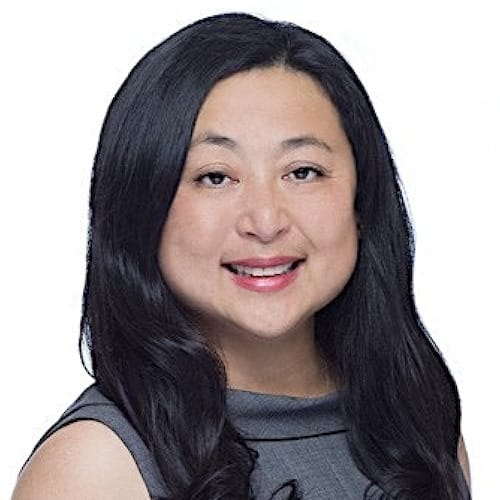
As caregivers, whether of our own family members or others’ loved ones placed in our care, we must be willing to re-evaluate how we view the care economy.
To my fellow Gen Xers, have you noticed that there’s no Dr. Spock for our aging parents? No book entitled, “What to Expect When You’re Taking Care of Aging Family Members and Your Own Children All at the Same Time?”
Oh, and also yourself.
Care — whether that’s giving or receiving — bookends all our lives. Yet for some reason, the bulk of the focus is either squarely on the front end of that journey, when children enter the picture, or the back end, when parents and other relatives begin to age.
But what about the middle and the transition from one phase to another? For us to thrive as a society, I believe we need to start thinking about care, not as something that happens at the start or end of life, but something that is continuous — something that enhances life and doesn’t diminish it.
Currently, we’re not set up for this reality. But by radically rethinking the care economy, we can be. To flip the script and reframe how we offer care in this country, there are three conversations we need to have. Let’s take a look at each.
1. What does care look like at every stage in my live and my loved ones’ lives?
It doesn’t matter what season of life a person is in, we can all benefit from having a safety net of care. That peace of mind that comes from knowing measures are in place to protect you. But safety nets require preparation, and herein lies the rub.
By default, babies come with time built in to anticipate and plan their caretaking, usually with the help of others, whether that includes a partner, coworkers, friends or family. For the other side of life’s bell curve, it’s a bit more challenging. One minute your parents are spry, hiking Machu Picchu, and the next, they’ve fallen and broken a hip. Things can change at any moment. And they do — without nine months of preparation to “senior proof” your loved one’s home so they can continue to live independently.
How do we prepare for those unexpected situations? Communication. Instead of waiting for a parent to become vulnerable, we can talk with one another about caretaking for all the stages that comprise our lives. Perhaps it’s when they have their first grandchild. Do they want to live closer? With consistent planning and regular check-ins about what lies ahead (both the potential and inevitable), we replace fear with transparency. And in doing so, we can prepare for these events and provide our loved ones with a safety net instead of a rude awakening.
2. How does care help me live my best life?
Not to answer a question with a question, but what if, instead of viewing care through a lens of crisis and catastrophe, we viewed it as self-care? To some, this may seem like a stretch beyond radical, but hear me out.
When we shift our viewpoint of caring for others and receiving care as an opportunity for independence and freedom, the act becomes empowering, enriching, and a sign of agency, confidence and strength.
The process starts by completing three relatively straightforward steps:
- Acknowledge you need help.
- Ask for help.
- Accept the help.
Although simple, executing on those three steps can be difficult. They each require some degree of vulnerability. And who likes that feeling? This is especially true of the caregivers who belong to the sandwich generation, those people (primarily women) in their 40s and 50s situated between the young and old and responsible for caretaking both.
For women, it’s easy to assume the role of caregiver — for everyone. At peril to ourselves, we fall into the stereotype of feeling like we have to be invulnerable and completely self-reliant. When you consider that mothers in the sandwich generation feel more stress than any other age group, it becomes clear that functioning as a village unto ourselves is unsustainable.
It’s only when we become able to model for others that it’s OK to ask for and receive assistance that we can get off the island of one and instead provide safety and assistance to one another.
3. Who is in my care village, and how do we lean on each other?
Growing up, my care village consisted of three generations, with no fewer than seven kids running amok at any time. If my parents were working, then there always was an aunt, uncle or grandparent to help — and there was no shame in asking. If one person needed a break, someone else stepped in — caregiving was a shared responsibility, and the idea of a care village embodies the principle that everyone, regardless of age, deserves a supportive community around them. That’s not a common model anymore, especially in a Western culture dominated by the nuclear family. And although everyone’s care village is different, it doesn’t mean we all still don’t need one.
When you consider the concept of a village, it’s important to think beyond only family. Not everyone has family in the traditional sense and oftentimes, they can be fraught. A village, on the other hand, is accessible and available to all — it just may be your next-door neighbor, your former spouse, or the people you play cards with each month.
With a village, it doesn’t matter who “resides” there; the important thing is to have that connectedness of care. And just as its members don’t have to live under one roof or even next door, a village also might not even be a person, it also could be technology.
With advancements in AI and machine learning, technology that can connect caretakers to people both on and offline, and a proactive internet of things that allows caregivers and care receivers to get ahead of a future incident, our villages become exponentially vast.
This affords peace of mind. Because I worry — and not just about the older members of my family. I think of my daughter at college and her personal safety and security, my friend out on a Tinder date, and my real-estate agent relative, who makes a living showing houses to strangers.
It’s not likely that they’ll take a nasty spill or encounter anything untowardly, but if there’s a way to help them feel more cared for and safe, then I’m here for that. I’ll know my care village is a vibrant and dependable one. And this puts us all one step closer to leading a life with dignity, independence and the joy of possibility.
Chia-Lin Simmons is the CEO at LogicMark and a tech veteran with more than 25 years of industry experience. She previously worked at Google, Audible and additional companies before joining LogicMark in 2021. LogicMark provides personal emergency response systems, health communications devices, personal safety apps, services and technologies to create a connected care platform.
The opinions expressed in each McKnight’s Senior Living marketplace column are those of the author and are not necessarily those of McKnight’s Senior Living.
Have a column idea? See our submission guidelines here.


